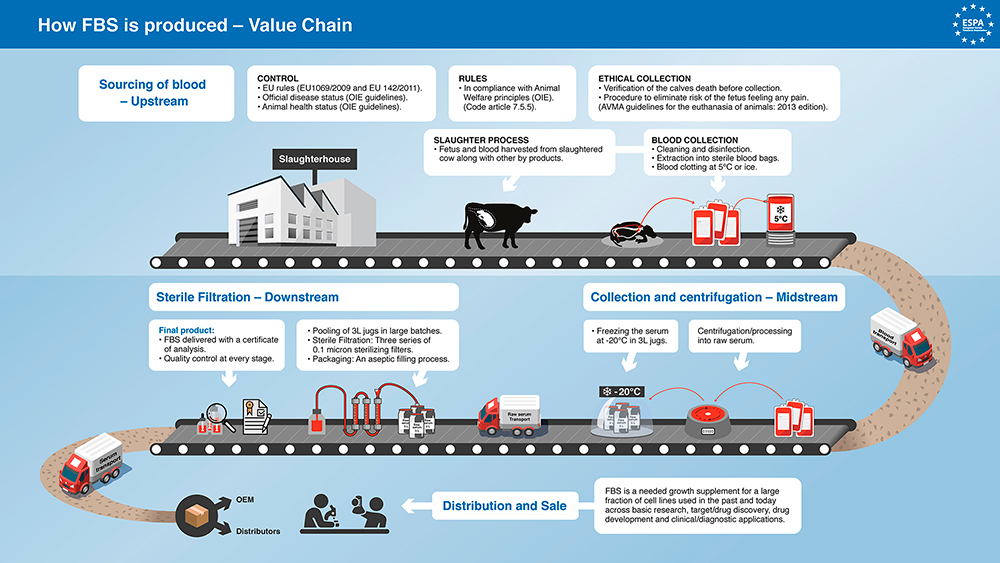Fetal bovine serum (FBS), or fetal calf serum, is used extensively in academic biology and laboratory research because it is highly pure and contains many cellular growth factors. Today, FBS is a key ingredient in the production of synthetic alternative protein (SAP), or lab-grown meat. Because of the way that SAP is obtained, however, this amber-colored fluid is controversial. Synthetic alternatives to FBS exist, but they cost significantly more.
How FBS is Extracted and Processed
To harvest FBS, a mother animal is slaughtered and a cardiac puncture is performed on the fetus without any form of anesthesia. Blood is removed from the unborn calf and then disinfected and filtered. The filtered blood is then spun in a machine called a centrifuge to separate out the raw serum. Prior to its distribution and sale, FBS is frozen. Depending on the country where extraction and processing occur, different regulations apply.
The diagram below applies to European Union (EU) countries but also references American Veterinary Medical Association (AVMA) guidelines.
Ethical Concerns and Scientific Evidence
Beef Central describes the FBS harvesting process as “slaughtering a pregnant cow, removing its unborn calf from its uterus, and harvesting the blood from it.” The authors of The Use of Fetal Bovine Serum: Ethical or Scientific Problem? assert that “Fetuses are probably exposed to pain and/or discomfort, so the current practice of fetal blood harvesting is inhumane.” Yet there is disagreement.
According to Bioprocessing Journal (BPJ), “one of the erroneous beliefs” about fetal bovine serum “is that fetal blood is collected from live fetuses”. This would seem to imply that the BJP believes blood is only harvested from dead fetuses. For their part, the World Organization for Animal Health (OIE) and AVMA claim that a live fetus does not feel pain so long as it remains within the dead mother animal.
So is the calf alive or dead when its blood is removed? And does the fetus feel pain during the cardiac puncture? According to the Danish Laboratory Animal Protection Society explains, cardiac puncture is normally “very painful”. Then there’s the fact that “the calf’s blood is pumped by each heartbeat into a bag.” As the blood is removed, the calf “dies due to the drop in blood pressure and lack of oxygen.”
In our next article, we’ll examine how FBS and the cell culture medium are added to a bioreactor to produce SAP.
